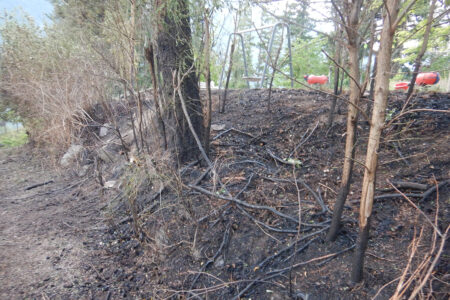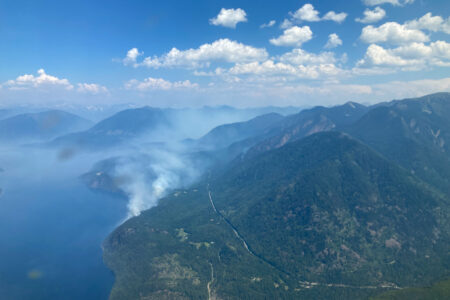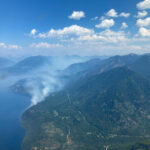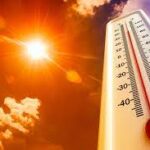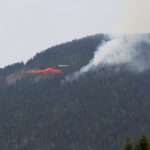The tsunami that struck northeastern Japan is now three years past, but it hasn’t stopped making waves
Debris travelling all the way from Japan has brought with it a number of Japanese marine species to the west coast, some of which have the potential to become invasive and devastate the coastal ecosystem.
Scientists were shocked to find that 165 different species had travelled from Japanese waters to the coast of North America on dislodged debris. Three of these species are known invasive threats and can devastate the coastal ecosystem if they get the chance to repopulate.
On March 11, 2011, northeastern Japan was hit by a severe tsunami, but its waves have affected the coast of North America in ways no one could have predicted. Over the last three years, thousands of pounds of dislodged debris has washed ashore on the west coast.
Fisheries and Oceans Canada and the British Columbia Ministry of Environment released information stating that debris hitting the coast will peak in the winter of 2014, but will continue through 2015, according to University of Oregon biology professors.
The Agate Beach Dock
The waves frothed as they slipped up and down the sands of Agate Beach. In the distance, a massive dock approached. It was 66 feet long, 19 feet wide, 7 feet high and made of concrete and steel, its innards filled with Styrofoam. It had floated across 5,000 miles of Pacific Ocean, after being dislodged from the waters in Misawa, Japan.
But the dock did not travel alone.
Back when it was still anchored safely in Misawa, the dock was covered densely in local marine life. During the tsunami, it was torn from the beach, with creatures clinging to it for dear life – although technically, they had always clung to it for dear life..
As the dock washed ashore on Agate Beach, many of the attached sea creatures were crushed against the sand and displaced by the dock’s shuddering movements, but thousands of the creatures still clung to the structure, with an amazing journey behind them and a deadly fate awaiting them.
John Chapman is a research scientist and a professor at Oregon State University. On June 5, 2012, John Chapman was leaving the university to go study an invasive species in California. His departure was delayed when he received the news that a Japanese dock had arrived on Agate Beach and was rife with foreign marine life.
“It was a surprise. Nobody thought that there would be a significant amount of biological material,” Chapman said. “It’s not unusual for species to cling to debris out in the ocean, [but] it wasn’t expected that species would come directly from Japanese shores. It’s a surprise they survived through the open ocean.”
After sampling all the species on the dock, Chapman, alongside fellow scientists and local volunteers, began the tedious task of scraping the creatures off the dock and hauling them to land where they would be buried. Afterwards, the dock was torched with fire to kill off whatever remained.
“About 30% of the 165 species we found were previously unknown on this coast and therefore are possible threats to the coast if they invade,” Chapman said.
A kelp, a crab and a starfish
Of all the critters that were on the dock, three are known to be invasive:
Undaria pinnatifida, a brown kelp algae; hemigraspus sanguineus, a Japanese shore crab; and asterias amurensis, a northern pacific starfish. The starfish is already a “horrific invader in Tasmania,” Chapman said.
Louis Gosselin, a professor of biology at Thompson Rivers University and an adjunct professor at the University of Victoria, specializes in marine invertebrate ecology.
Gosselin explained, “Species that are invasive have the ability to disperse a lot. They have a lot of offspring. They tend to be competitively quite strong and will start doing better in the habitat than the native species. They have no predators that are used to eating them, even disease and parasites aren’t used to infecting the invasive species.”
Gosselin related this tendency to human behaviour, “There might be new insects that come to B.C. but I’m not going to start eating them, because I eat beef. I eat animals and plants that I’m used to eating.”
Basically, he’s saying that there’s a strong possibility any predators would just ignore the new species invading the coast.
But that’s only if the creatures start invading the coast. Right now, it’s impossible to say if the kelp, the crab or the starfish have released any spores, or had any offspring on our shores.
“If they were reproducing at the time they got here, that’s when it would be a problem,” Gosselin said.
It would also be a problem if any of the kelp, crabs or starfish dislodged from the dock as it arrived on Agate Beach, and swam away unharmed.
“About 60 per cent of the biomass on the dock that washed onto Agate Beach washed off with little harm as it came ashore. It ‘got away,’” Chapman said.
In December 2012, a second Japanese dock, also harbouring invasive species, washed ashore in Washington. It, too, was scraped clean. But here the window which gives invasive species a chance to reproduce on the west coast shores widens.
Gosselin explained that any debris small in size carries little risk of carrying invasive species, but large items, like the Japanese docks, have great potential to carry Japanese species.
According to B.C.’s tsunami debris coordinating committee, those docks are only two of four docks to be dislodged from Japan and travel across the Pacific. The third dock was last seen near Hawaii, but has since been lost. The fourth dock’s whereabouts are currently unknown.
According to Chapman, there are no attempts being conducted to locate the missing docks, which are sure to harbour more invasive species. Finding them really would be akin to finding a needle in a haystack.
“The scouring for debris – I don’t know if it’s even one per cent of our coastline. This stuff is going all the way up to Alaska and down to California. There are so many parts of our shoreline that no one ever goes to. There missing dock could be on our shoreline and no one’s ever going to find it,” Gosselin said.
If that is the case, and invasive species have already begun new life with offspring on our coasts, it could take years before anyone notices.
“By the time you find them it could be years from now. By the time you find them there could be millions of [creatures] around,” Gosselin said.
This is typically how it goes with invasive species.
Think back to the zebra mussel. After invading the great lakes, it repopulated in such great numbers that it suffocated the native species, clogged pipes leading out of the lakes and covered the beaches until barely any sand was visible. Research shows the zebra mussels first arrived in the great lakes in 1987, “but no one started to notice them until the 1990s,” Gosselin said. The zebra is a prime example of how much damage an invasive species can do.
More debris, more species, more potential for invasion
What about B.C.’s coast? Chapman and Gosselin both agree that the largest threat to the ecosystem are the docks that arrived in Oregon, but any species that becomes invasive in Oregon will eventually make its way to B.C.
That being said, B.C. has received its fair share of debris crawling with sea life, too.
A shipping container, two fishing boats and a cement tank washed up on B.C. shores, all with Japanese species on them.
The government of British Columbia released an frequently asked questions document about the Japanese debris, which states, “The Japanese government estimated 1.5 million tonnes of tsunami debris was left floating in the Pacific Ocean … most tsunami debris came from land and does not pose an aquatic invasive species risk; however, some marine based objects might.”
B.C.’s tsunami debris coordinating committee stated, “Most aquatic species on debris are ‘normal.’” Unfortunately there is no clarification on what exactly “most” and “normal” mean.
“There’s no systematic efforts to look for these species living on the coast. It’s not simple to look and there is a real threat that we are concerned about,” Chapman said.
It’s impossible to say what will happen next. Will the brown kelp grow invasive roots on the coast? Will the northern pacific starfish repopulate and suffocate native mussels and clams? Will the B.C. beaches be so densely covered in Japanese shore crabs that with every step will crush them?
Hopefully not.
But now, more than ever, is the time to pay attention to any debris arriving on the coast.
Brian Heise, a professor at Thompson Rivers University and a member of the Invasive Species Council of British Columbia, said the best way to prevent invasive species from repopulating is to remove debris from the water immediately. The marine species will die if left on land.
“Education is important. It’s critical word gets out to coastal communities so they know to be on the lookout. There is a real threat to our local species. With the organisms coming across, it’s not just a matter of having extra animals on our shore. These animals could affect our shellfish industries,” Heise said.
Heise said that it will be “a combination of American and Canadian efforts,” with Fisheries and Oceans Canada, the B.C. ministry of environment and the coast guard all working together.
Diligent work has been done – hundreds of volunteers have worked on the coasts to clean up the debris. The government of B.C. has received $1 million from the Japanese government to aid in debris cleanup.
But there is still a real threat to the coast. For now, all we can do is watch, wait and appreciate walking the sandy beaches, without crushing crabs with every step.
Tayla Scott is a jouralism student at Thompson Rivers University. This article originally appeared in The Omega Student Newspaper. Reprinted with permission.




